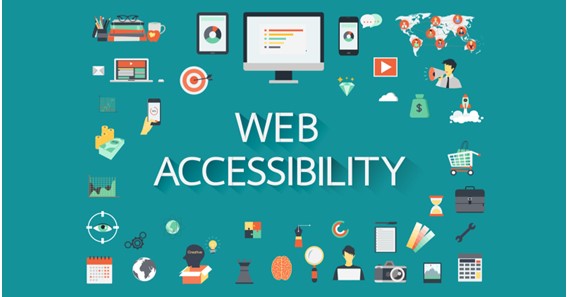Creating an accessible website is essential for providing a positive user experience.
An accessible website allows all users, regardless of their physical or mental abilities, to navigate and interact with your content without any difficulty.
Designers and developers have the responsibility to ensure that websites are compliant with web accessibility standards.
We’re diving into some tips on how to design and develop an accessible website so that everyone can access it easily.
With these tips, you’ll be able to create a more inclusive online experience for all users.
1. Start With Planning
Accessibility should be taken into account during the planning process. When planning a website, consider the needs of all users.
Think about how people with disabilities might interact with the site and what features you might need to include to accommodate them.
Make sure that all stakeholders involved in designing or developing the website are aware of accessibility requirements. This will help ensure that the website is built with accessibility in mind.
2. Design Around Accessibility
Think about how people with disabilities will be interacting with your website and design around that.
An accessibility-first design means ensuring that all content on the site can be accessed easily by people with disabilities, including images, audio files, videos, etc.
For example, use a logical hierarchy when it comes to organizing information on the website.
Also, make sure that navigation options are clearly labeled and that there are multiple ways to access the content.
Click Here – How to Intercept Text Messages Without Accessing the Phone: A Sneaky Guide
3. Use Appropriate Color Contrast
When it comes to color, use a combination of light and dark colors that will make text easier for people with low vision or color blindness to read.
The contrast should be at least 4.5:1 for normal text and 3:1 for large text. You can check the contrast ratio of your website using a color contrast tool.
4. Include Alt Text for Images
Alt text or alternative text is used to describe images so that people who are visually impaired can understand them.
It should be descriptive and provide enough information for someone to understand what the image is about without having to view it.
Alt text can also be used to improve the website’s SEO, so it’s important to include this on your site.
5. Make Sure Forms and Input Fields are Accessible
Forms and input fields need to be designed with accessibility in mind.
Make sure that they are clearly labeled and easily navigable by people who use screen readers or other assistive technologies.
Consider adding helpful instructions and hints so that users can fill out the form more easily.
6. Including Captions for Media Content
Captions are essential for making media content, such as videos and podcasts, accessible to people who are deaf or hard of hearing.
Closed captions should be used for all media content on the website so that users can understand it without having to rely on sound.
Make sure that your website can be navigated using a mouse or keyboard.
People with disabilities may only have access to one of these input devices, so it’s important to design the website in a way that allows for navigation using both.
Multiple navigation methods includes making sure there are visible focus indicators for interactive elements and providing clear instructions on how to navigate through the site.
8. Test Your Website Before Going Live
When you’re done designing and developing the website, it’s important to test it thoroughly.
Testing should include accessibility and usability. Use automated tools to check for accessibility issues, such as missing alt text or low color contrast.
You should also manually test the website with a range of assistive technologies to make sure that everything is working as expected.
Once you’ve tested the website and fixed any issues, you can go live with confidence.
9. Continually Update to Reflect the Latest Standards
Web accessibility standards are constantly changing, so it’s important to keep up with the latest guidelines and make any necessary changes to ensure your website is compliant.
Make sure to review your website periodically and update it if needed. It’s also a good idea to constantly look for new ways to improve the accessibility of the site.
To make the process easier, it’s best to have a bug tracker (like this) that helps to identify any broken code that can impact usability or accessibility for any users.
Conclusion
Designing and developing an accessible website is essential for providing a positive user experience.
This will ensure that all users, regardless of their physical or mental abilities, can access and interact with your content without any difficulty.
Also, note that creating an accessible website is not only important for providing a positive user experience, but it is also required by law in some places.
Designers and developers have the responsibility to make sure that websites are compliant with web accessibility standards in all aspects.

